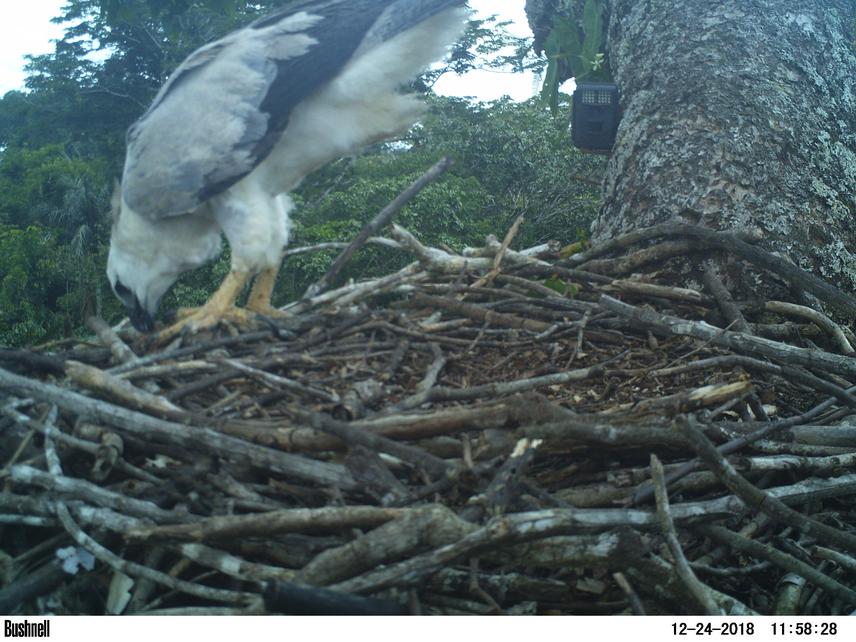Everton Bernardo Pereira de Miranda
Other projects
Our main aims for this project cycle are to:
1) Form local leaderships for the conservation of harpy eagles, improving the diffusion of educational and socioeconomic impacts in local communities. That includes building a stronger presence in schools and presenting the project in social networks.
2) Conclude the publication showing that harpy eagle nests influence the formation of fertility mosaics over the Amazon Forest.
3) Strengthen our network of harpy eagle nests in order to protect more eagles, expand our conservation research and improve our profile as an ecotourism attraction.

In the next project cycle, one of our priorities will be training new leaders on harpy eagle conservation will improve our contact with the local communities. Having native professionals will help our nest searching efforts, because local people do not generate suspicion when searching for the eagles. It can also improve our environmental education efforts by removing barriers with locals and outsiders. Finally, it will facilitate the signing of tourism contracts by using proponents that are actually members of the same community. We will offer a free course on harpy eagles in order to pick the most talented people and train them as partners for future collaborations. We are discussing the establishment of an institution in 2022. That will further spread the benefits of our project in the Mato Grosso state.
Additionally, we plan to quantify how harpy eagle long-term adherence to a nest site – where thousands of animal carcasses are eaten over decades - relates to soil features (mineral profiles, and therefore plant nutritional profiles). If our hypothesis is proven correct, we will be able to point harpy eagles as environmental engineers. As ecological prominence attracts the interest of scientific and conservation communities, this is a sound research strategy for the conservation of the species - as the reintroduction in Yellowstone was for wolves. Our tourism alliance is already resulting in economic benefits for landowners and job creation in our study region. We have been protecting 35 nests, and have three towers and several platforms at work, and will regain momentum as the pandemics recedes. However, we must find extra nests in order to offer good photographic safari experiences year-round, because tourists prize nests with small chicks. Furthermore, we must place extra resources in finding nests which are in close distance to airports, allowing guests to see eagles on their first day of visitation.